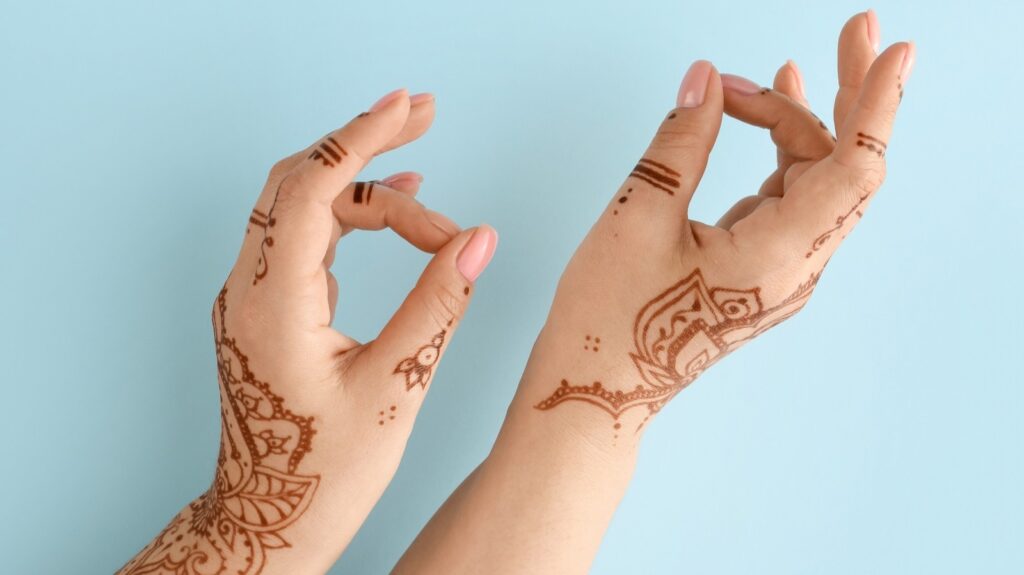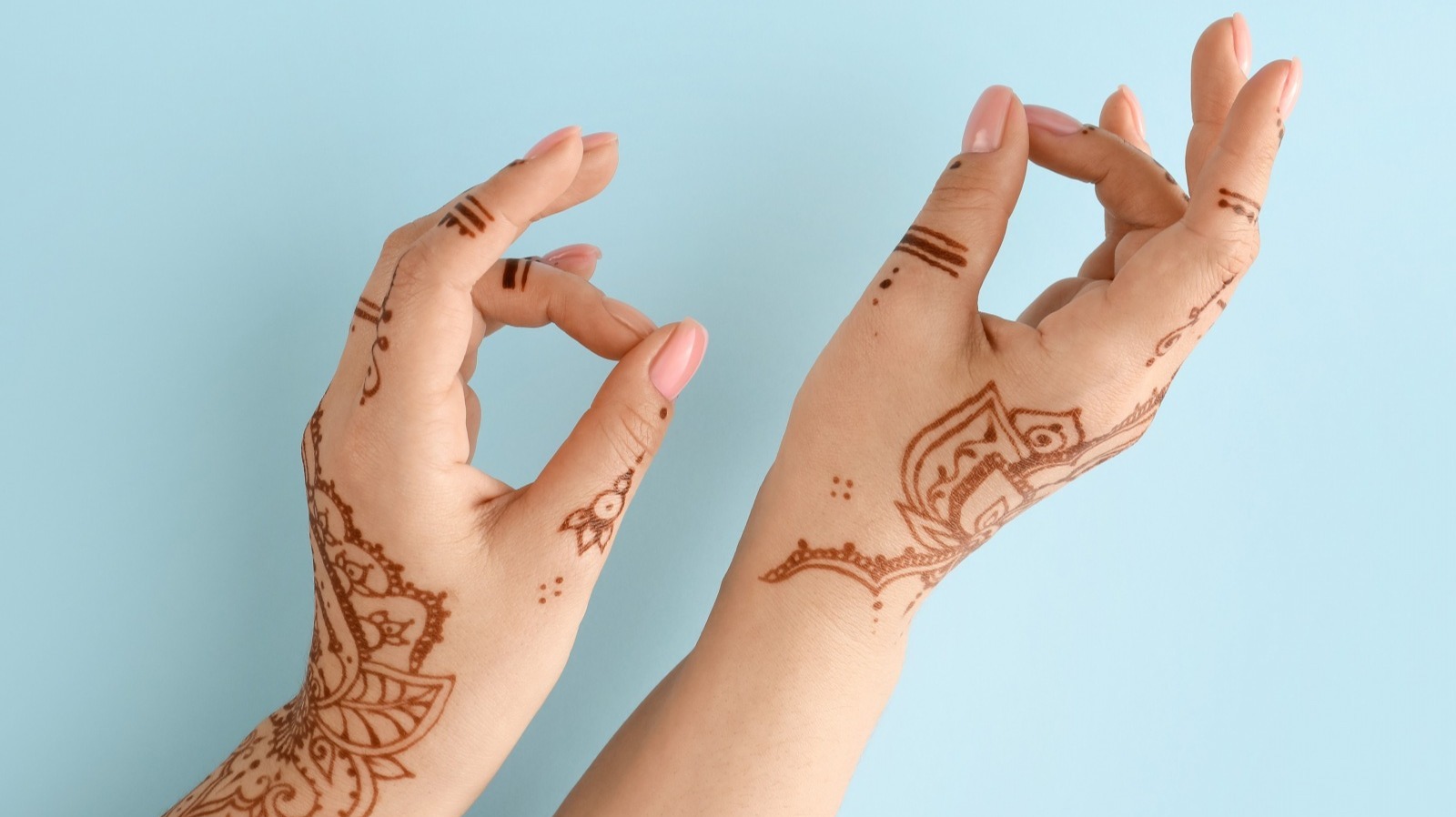
Hand Henna Tattoo: Art, Tradition, and Modern Trends
The hand henna tattoo, also known as Mehndi, is a form of body art originating from the Indian subcontinent, North Africa, and the Middle East. It involves applying a paste made from the powdered dry leaves of the henna plant (Lawsonia inermis) to create intricate designs on the skin. While henna can be applied to various parts of the body, the hands are a particularly popular canvas, making the hand henna tattoo a significant cultural and artistic expression. This article delves into the history, cultural significance, application process, safety considerations, and modern trends surrounding hand henna tattoos.
A Glimpse into History and Cultural Significance
The history of henna dates back thousands of years, with evidence suggesting its use in ancient Egypt for cosmetic and medicinal purposes. However, it was in the Indian subcontinent that henna truly flourished as an art form. Traditionally, hand henna tattoo designs were an integral part of wedding ceremonies, symbolizing good luck, joy, and prosperity for the bride. The intricate patterns often told stories, represented blessings, or depicted symbols of fertility and abundance.
In many cultures, the application of hand henna tattoo is a communal event, with family and friends gathering to adorn the bride’s hands and feet with elaborate designs. This process is not only a celebration of the upcoming marriage but also a bonding experience, strengthening the ties between family members. The darker the stain of the henna, the deeper the love between the bride and groom is believed to be.
Beyond weddings, hand henna tattoos are also used to celebrate other significant occasions, such as births, religious festivals (like Eid and Diwali), and other joyous events. The designs vary across different regions and communities, reflecting unique cultural beliefs and artistic traditions. For example, designs from the Middle East often feature floral motifs, while those from India tend to be more intricate and detailed, incorporating paisleys, peacocks, and other symbolic elements.
The Art of Application: From Paste to Pattern
Creating a hand henna tattoo is a meticulous process that requires skill, patience, and an understanding of design principles. The process starts with preparing the henna paste, which traditionally involves grinding the dried henna leaves into a fine powder and mixing it with liquids such as lemon juice, tea, or essential oils. The specific recipe varies depending on the region and the desired consistency and staining power of the paste.
Once the paste is prepared, it is applied to the skin using various tools, such as cones, syringes, or brushes. The artist carefully traces the design onto the hand, paying attention to detail and symmetry. The paste is left on the skin for several hours, allowing the dye to penetrate the epidermis and stain the skin. The longer the paste remains on the skin, the darker and more long-lasting the stain will be.
After the paste has dried, it is often sealed with a mixture of lemon juice and sugar, which helps to keep the paste moist and allows for better dye release. Once the paste is removed, the stain will initially appear orange but will gradually darken to a reddish-brown color over the next 24-48 hours. The final color and longevity of the hand henna tattoo depend on various factors, including the quality of the henna, the skin type, and aftercare practices.
Choosing a Design
Selecting the right design is a crucial part of the hand henna tattoo experience. The design should not only be aesthetically pleasing but also meaningful and culturally appropriate. Consider the occasion for which you are getting the henna, as well as your personal preferences and style. There are countless design options to choose from, ranging from traditional patterns to modern interpretations. You can find inspiration in books, online resources, or by consulting with a henna artist.
Finding a Skilled Artist
Choosing a skilled and experienced henna artist is essential for achieving a beautiful and safe hand henna tattoo. Look for artists who have a portfolio of their work and who use high-quality, natural henna paste. Avoid artists who use “black henna,” which contains a chemical dye called paraphenylenediamine (PPD) that can cause severe allergic reactions and permanent scarring. Always inquire about the ingredients used in the henna paste and ensure that the artist follows proper hygiene practices.
Safety Considerations: Natural Henna vs. Black Henna
One of the most important aspects of getting a hand henna tattoo is ensuring its safety. Natural henna, derived from the henna plant, is generally considered safe for topical use. However, “black henna,” which is often marketed as a faster-staining and darker alternative, poses significant health risks. Black henna contains a chemical dye called paraphenylenediamine (PPD), which can cause severe allergic reactions, blistering, scarring, and even permanent skin damage.
It is crucial to avoid black henna at all costs and to only seek out artists who use natural henna paste. Natural henna stains the skin a reddish-brown color, while black henna stains the skin a dark black color almost immediately. If you are unsure whether a henna paste is natural or not, it is best to err on the side of caution and choose a different artist or design.
Always perform a patch test before getting a full hand henna tattoo, especially if you have sensitive skin or a history of allergies. Apply a small amount of henna paste to a discreet area of your skin and wait 24-48 hours to see if any reaction occurs. If you experience any redness, itching, or swelling, discontinue use immediately and consult a doctor.
Modern Trends in Hand Henna Tattoo
While traditional hand henna tattoo designs remain popular, there is a growing trend towards modern and contemporary interpretations. These designs often incorporate geometric patterns, minimalist motifs, and unique color combinations. Some artists are also experimenting with different application techniques, such as using stencils or freehand drawing, to create one-of-a-kind designs.
Another trend in hand henna tattoo is the use of white henna, which is not actually henna but rather a body paint or adhesive that creates a temporary white design on the skin. White henna is often used for bridal henna, as it provides a striking contrast against the skin and complements white wedding dresses. However, it is important to note that white henna is not as long-lasting as natural henna and may require more frequent touch-ups.
The rise of social media has also played a significant role in popularizing hand henna tattoo. Platforms like Instagram and Pinterest are filled with stunning images of henna designs, inspiring people around the world to embrace this ancient art form. Many henna artists use social media to showcase their work, connect with clients, and stay up-to-date on the latest trends.
Caring for Your Hand Henna Tattoo
Proper aftercare is essential for ensuring a long-lasting and vibrant hand henna tattoo. After removing the henna paste, avoid washing the area with soap and water for at least 24 hours. You can apply a natural oil, such as coconut oil or olive oil, to moisturize the skin and protect the stain from fading. Avoid using harsh chemicals or exfoliants on the area, as these can strip the stain and shorten its lifespan.
Exposure to water and heat can also cause the hand henna tattoo to fade more quickly. When washing your hands, try to avoid getting soap directly on the hennaed area. You can also wear gloves when doing dishes or other activities that involve prolonged exposure to water. Additionally, avoid spending excessive time in saunas, hot tubs, or direct sunlight.
With proper care, a hand henna tattoo can last for up to two weeks, gradually fading over time as the skin naturally exfoliates. The exact lifespan of the tattoo depends on various factors, including the quality of the henna, the skin type, and aftercare practices. [See also: Henna Designs for Beginners] [See also: Temporary Tattoo Safety] [See also: History of Body Art]
Conclusion
The hand henna tattoo is more than just a temporary body art form; it is a rich cultural tradition with a history spanning thousands of years. Whether you are drawn to its intricate designs, its symbolic meaning, or its communal aspect, the hand henna tattoo offers a unique and meaningful way to express yourself and connect with different cultures. By understanding the history, application process, safety considerations, and modern trends surrounding hand henna tattoos, you can appreciate this ancient art form and enjoy its beauty responsibly.

